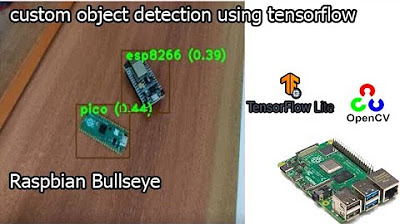Make Your First AI in 15 Minutes with Python
Summary
TLDRIn this tutorial, the instructor guides viewers through building an AI to predict whether a tumor is malignant or benign using Python and TensorFlow in Google Colab. Starting with data upload and preprocessing, the video covers how to prepare the dataset, build a neural network with input, hidden, and output layers, and compile the model using the Adam optimizer and binary cross-entropy loss. The AI is trained and evaluated, demonstrating how quickly machine learning can help radiologists with cancer diagnosis. The video highlights the importance of AI in healthcare, achieving an impressive 97% accuracy in predictions.
Takeaways
- 😀 Start by using Google Colab to run AI code directly in the browser.
- 😀 Rename your notebook for easy identification and connect to a runtime to access free GPUs provided by Google.
- 😀 Upload your dataset (e.g., cancer.csv) which contains features to predict tumor diagnoses (malignant or benign).
- 😀 The target attribute for prediction is the 'diagnosis' column, where 1 represents malignant and 0 represents benign.
- 😀 Use the pandas library to import and handle your dataset efficiently with 'pd.read_csv'.
- 😀 Separate the dataset into features (X) and labels (Y) to train the AI, dropping the 'diagnosis' column for X and using it for Y.
- 😀 Split the data into training and testing sets using the 'train_test_split' function from scikit-learn.
- 😀 Build the neural network model using TensorFlow's Keras API, starting with a sequential model.
- 😀 Add layers to the model: input layer, hidden layers (with activation function 'sigmoid'), and output layer with a single neuron.
- 😀 Compile the model using the Adam optimizer, binary cross-entropy loss function, and accuracy as the evaluation metric.
- 😀 Fit the model to the training data, running the algorithm over a set number of epochs to fine-tune the model.
- 😀 After training, evaluate the model on the test set to check its performance, achieving a high accuracy of 97% for cancer diagnosis prediction.
Q & A
What is the purpose of using Google Colab in this tutorial?
-Google Colab is used because it allows you to write and run Python code directly in the browser. It also provides free access to GPUs for training machine learning models, which is essential for tasks like AI development.
What is the significance of the dataset 'cancer.csv'?
-The 'cancer.csv' dataset contains information about tumors, with each row representing a tumor and its features. The goal is to predict whether a tumor is malignant (cancerous) or benign (non-cancerous) based on these features.
How are the features and labels separated in the dataset?
-In the dataset, the 'diagnosis' column is the label (y), which indicates if the tumor is malignant or benign. The features (X) are the other columns that contain numerical data describing the tumor, such as size and shape.
Why is it important to split the dataset into training and testing sets?
-Splitting the dataset is important to prevent overfitting. The training set is used to train the model, while the testing set is used to evaluate its performance on unseen data, ensuring that the model generalizes well.
What does the term 'overfitting' mean in the context of machine learning?
-Overfitting occurs when a model performs well on the training data but poorly on new, unseen data. This happens because the model has learned to memorize the training data rather than generalize from it.
What is the role of TensorFlow and Keras in building the AI model?
-TensorFlow and Keras are used for building and training the neural network model. Keras provides a high-level interface for creating neural networks, while TensorFlow is the underlying framework that handles the computations.
Why is the 'sigmoid' activation function used in this neural network?
-The sigmoid activation function is used because it outputs values between 0 and 1, which is ideal for binary classification problems, such as determining if a tumor is malignant or benign.
What is the purpose of the 'adam' optimizer in this AI model?
-The 'adam' optimizer is used to adjust the weights of the neural network during training. It is an efficient optimization algorithm that helps the model converge to the best solution by minimizing the loss function.
What is the role of the 'binary_crossentropy' loss function in this model?
-The 'binary_crossentropy' loss function is used because the model is performing binary classification. It measures the difference between the predicted probabilities and the actual class labels (malignant or benign).
What does an accuracy of 97% on the testing set indicate?
-An accuracy of 97% on the testing set means that the model correctly classified 97% of the tumors as malignant or benign, demonstrating that it generalizes well to new data.
Outlines

This section is available to paid users only. Please upgrade to access this part.
Upgrade NowMindmap

This section is available to paid users only. Please upgrade to access this part.
Upgrade NowKeywords

This section is available to paid users only. Please upgrade to access this part.
Upgrade NowHighlights

This section is available to paid users only. Please upgrade to access this part.
Upgrade NowTranscripts

This section is available to paid users only. Please upgrade to access this part.
Upgrade NowBrowse More Related Video

24-10-2024 Logistic Regression Perhitungan Manual dan Sintaks Pythonnya

How to make an AI read your handwriting (LAB) : Crash Course Ai #5

tensorflow custom object detection model | raspberry pi 4 tensorflow custom object detection

Cara Menggunakan Google Colab - Kelas Data Science - Python #01

Penggunaan Google Colab (Colaboratory) untuk Pemrograman Python

Building Your AI Startup: Guide to Tools, AI Providers, Programming Languages, and more
5.0 / 5 (0 votes)